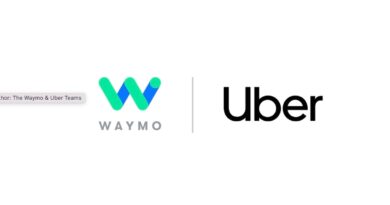Hosting EV chargers is a boon for retailers. For charging networks, not so much
Simon Property Group’s malls and outlets are stuffed with amenities: hotels, restaurants and even a play fossil pit for young children. Add more than a thousand electric vehicle chargers to the mix.
Simon is one of a growing number of companies — including Starbucks, 7-Eleven, Walmart, Target, Sonic Drive-In and Taco Bell — that are installing EV charging stations at their locations. Retailers say they get captive customers who are waiting for a charge — a boon for companies that are “feeling the hangover” of volatility from the pandemic, supply chain snarls and economic ups and downs, according to Deloitte’s 2023 Retail Industry Outlook.
Shoppers are “going there to eat, to shop, to play, to walk around to find something new,” said Daniel Segal, vice president of business development at Simon Property Group. “It just made a lot of sense to me.”
Retailers view on-site chargers as a customer perk on a par with expected offerings such as drive-thrus.
“EV charging should be as easy as getting a great cup of coffee,” Michael Kobori, Starbucks chief sustainability officer, said in a statement. He said he sees charging stations as a way “to enhance the Starbucks Experience.”
While the benefits are clear for the retailers, they’re less so for the public charging networks, which face a long road toward profitability for an expensive technology that drivers will increasingly use at home.
Simon, which runs malls and outlet centers including Roosevelt Field in New York, The Galleria in Houston and Sawgrass Mills in Florida, installed its first EV charging station in 2011 in Orlando in partnership with Car Charging Inc., now called Blink Charging Co. That was after Segal read that Tesla Inc. planned to scuttle its tiny Roadster to produce the larger Model S sedan, a vehicle that would have wider consumer appeal.
“I reached out to Tesla incessantly for about a month until somebody called me back,” Segal said.
Segal ultimately spoke to George Blankenship, the former Apple executive who had become Tesla’s vice president of worldwide sales and ownership experience. Segal pitched creating Tesla advertising, displays and test driving at Simon properties. Instead, Blankenship suggested using the spaces for electric charging.
“I think I replied something to the effect of, ‘Sounds great. What is that?’ ” Segal said. “And that’s how it started.”
Simon’s first Tesla-operated chargers opened in 2013.
Now, the charging stations at Simon locations function as property rentals. EV charging networks coordinate the equipment, maintenance and power and pay Simon to host the stations in parking lots. The charging rentals are part of a lucrative revenue stream for Simon — the company generated nearly $5 billion in total store and other lease income in 2022.
Simon makes sure the sites are qualified — the company tracks restrictions, easements, legal impediments and use clauses that dictate how facilities are used.
And the benefits for companies such as Simon are documented. A study by the ChargePoint network found that one retailer that installed chargers in 2012 saw dwell time for customers increase by nearly an hour.
But the charging companies don’t reap the same benefits. Networks such as EVgo, ChargePoint and Electrify America have higher costs and fewer sources of revenue related to public charging than their hosts.
ChargePoint posted a net loss of $344.5 million on revenue of $468.1 million for the fiscal year ended Jan. 31. EVgo, which runs more than 70 charging sites on Simon properties, saw a net loss of $106.2 million on revenue of $54.6 million for the fiscal year ended Dec. 31. Blink Charging logged a net loss of $91.6 million on revenue of $61.1 million for the fiscal year ended Dec. 31.
“Charging economics is very, very challenging,” said Akshay Singh, an automotive industries principal at PwC, about the networks installing stations at retailers and restaurants. “Nobody makes money right now.”
Retailers and restaurants hosting chargers see revenue from increased spending at shops and on leases and other agreements from the networks. Networks’ income from public charging is generally limited to what they make on fees.
While S&P Global Mobility predicts that public charging infrastructure will need to quadruple by 2025 to meet demand, analysts say the bulk of EV charging will ultimately happen at home for greater convenience and less money. That cuts into the public networks’ charging revenue.
For now, the charging networks can tap into a steady stream of government funding and support. The National Electric Vehicle Infrastructure Formula Program earmarked $5 billion for organizations building EV charging infrastructure, and the 30C Alternative Fuel Infrastructure Tax Credit grants businesses a 30 percent tax write-off to install chargers.
Companies can also get money from states — Georgia, for example, provides funding to businesses that purchase and install EV supply equipment. Oregon is planning a rebate program that will give installers in public places more than $4,000 per port.
The most cost-effective chargers are still relatively slow, taking hours to fully recharge a vehicle. Faster chargers are extremely expensive but have the most demand. Even when EV drivers are whiling away the hours at stores or restaurants, they still want the faster chargers, Segal said. Commercial installation can cost $20,000 to $30,000 for a Level 2 charger and $400,000 to $750,000 for a faster Level 3 charger.
A 2019 study commissioned by New York state found that host sites’ extra revenue, were it counted toward the revenue from the chargers, could increase the charging stations’ profitability by up to 250 percent. In some cases, restaurants and retailers won’t work with a network and will just pay for charger installation themselves, then reap both the fees from the chargers and the additional retail revenue.
Electrify America, which operates nearly 70 charging stations for Simon, said the company has other sources of income, such as charging collaborations with auto brands. Electrify America also said it’s seeing “tremendous year-over-year growth” — about five times the number of charging sessions from 2021 to 2022. In 2022, Electrify America had about 6 million charging sessions.
“We expect that to continue,” a spokesperson said in a statement.
Schneider Electric, which designs and delivers software and hardware for energy management, said that associating charging with consumer brands speeds EV adoption, which in turn supports charging networks. In the meantime, companies such as Simon plan to continue to add stations.
“We’re moving in scale to get this into as many qualified properties as we can,” Segal said.
Source : Autonews.com




